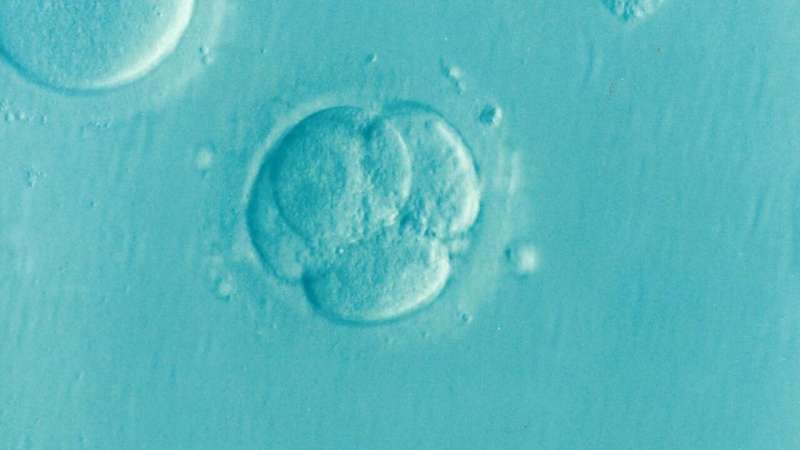This article has been reviewed according to Science X's editorial process and policies. Editors have highlighted the following attributes while ensuring the content's credibility:
fact-checked
peer-reviewed publication
trusted source
proofread
Embryo and organoid models do not threaten the definition of personhood, bioethicist says

Advances in organoids and embryonic models of human development have the potential to prompt social and existential questions—e.g., what defines human individuality? However, bioethicist Insoo Hyun of Harvard Medical School and the Museum of Science in Boston says that these models have the potential to strengthen rather than weaken the concept of human individuality when considered within the philosophical frameworks of "personhood" and sentience.
In a commentary publishing June 20 in the journal Cell, Hyun argues that despite huge advances, we are a long way off from developing technologies that would enable embryo models or organoids to achieve personhood.
"In the process of illuminating these biological mysteries, human stem-cell-based modeling could recast much of what we take to be special about ourselves as simply a reproducible series of physical events," writes Hyun.
"Could these new technologies change our view of ourselves? What does it mean for individuality, for example, if the early embryonic history of each cell line donor can be replayed again and again through the artificial generation of identical human embryo models?"
To answer these questions, Hyun dives into the philosophical concepts of personhood and sentience.
To be a person rather than simply an individual, one must possess the ability to make rational decisions and act thoughtfully on desires.
Hyun notes that it is the embryo's potential to become a person, not its current personhood, that matters to most human embryo advocates, and similar issues surround patients at the end of life. However, this potential hinges not only on the embryo's or end-of-life patient's biology, but also on their technological and circumstantial situation.
"Ex corporeal embryos, for example, must not only be genetically and morphologically robust to have a biological chance at becoming a human person, but, just as crucially, they must also be chosen—normally by those for whom they were created—to be implanted into a woman's uterus and carried to term," writes Hyun.
"Likewise for patients at the end of life. Not only must they have the biological potential for their brains to recover functioning, but they must also be cared for in a hospital setting by decision makers who have the right technologies at their disposal."
For embryos used in research rather than for assisted reproductive purposes, the circumstantial potential for them to become a person is non-existent. Similarly, though organoids can self-assemble and carry out many of the functions of human organs on a small scale, there is no possibility that they could self-assemble into an independently functioning and conscious individual.
"Since the cognitive bar is set so high for personhood, it seems premature to worry about whether brain organoids, neurological chimeras, or embryo models deserve the ethical protections normally afforded to persons," Hyun writes.
"The science simply is not there to support these concerns now and would have to depend on major technical innovations to get there in the future. Not even the most extreme forms of human-to-nonhuman neurological chimerism that one could imagine would support fears about personhood emerging in acutely altered animals."
Likewise, current in vitro embryo and organoid models are far from reaching sentience—the ability to have sensory experiences like pleasure and pain—which is thought to arise in human fetuses after 24 gestational weeks.
The only case in which organoids are likely to experience sentience is when they are transplanted into a living animal model, for example, the recent study by Stanford researchers that transplanted human brain organoids into rats—but rats are already considered sentient, and the ethics of such studies are already scrutinized as such.
"In response to the question of whether new technologies for human developmental modeling could destabilize our view of ourselves, the answer is no, not if we remain mindful of the bedrock distinctions between biological individuals and persons, biological and circumstantial potentiality, and sentient and non-sentient biological individuals," writes Hyun.
"Rather than weakening the grounds for which we value human life, perhaps an increased familiarity with developmental models could strengthen our beliefs by reminding us of what really matters–the well-being of actual persons and sentient individuals."
More information: Dynamic Models of Human Development and Concepts of the Individual, Cell (2024). DOI: 10.1016/j.cell.2024.05.028. www.cell.com/cell/fulltext/S0092-8674(24)00537-3
Journal information: Cell
Provided by Cell Press



















